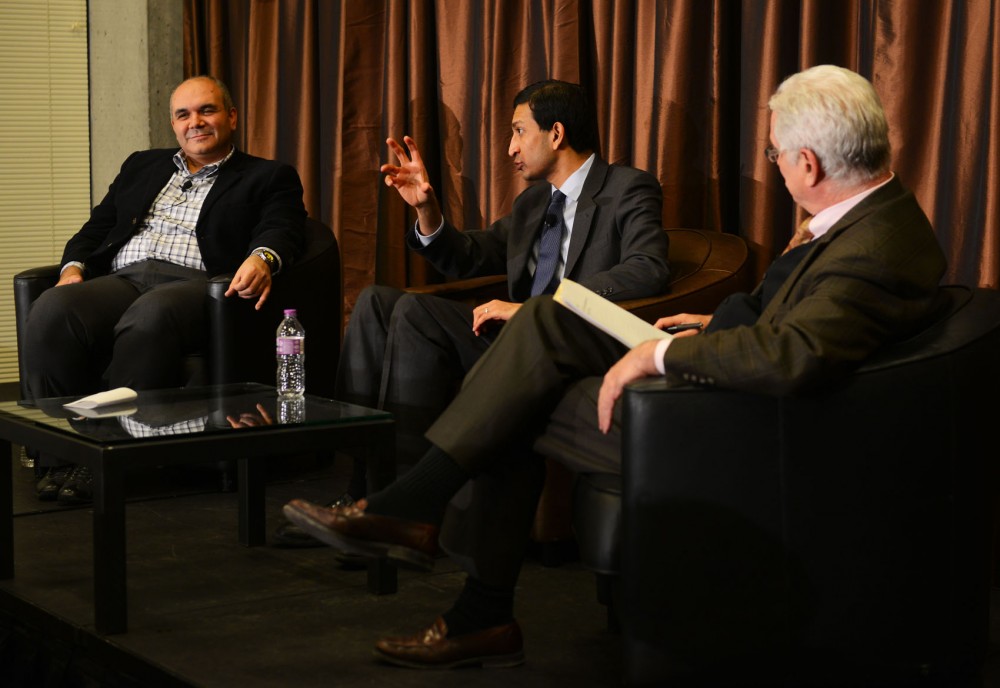Rising from a low economic standing to a higher status is harder to achieve in some places than others.
Income inequality is growing nationwide, but how areas are affected by wage differences vary, according to research by University of Minnesota economics professor Fatih Guvenen and Harvard University economist Raj Chetty that was discussed at the McNamara Alumni Center on Thursday.
For example, a person born into a poor family in Dakota County is about twice as likely to achieve what researchers have defined as “the American Dream” than someone born about a 35-mile drive away in Hennepin County, according to the research.
Guvenen said though income inequality among average Americans has increasingly become a problem over the past 40 years, much of the issue’s research and media attention has centered on data that only considers the disparities between the country’s highest- and lowest-paid workers.
“The idea that rising CEO pay raises inequality doesn’t hold much water,” he said at Thursday’s event.
Instead, income inequality has more to do with changing trends, Guvenen said. He analyzed data on 15 million people for his research, which he said helped pinpoint large-scale trends of inequality growth.
“Some of what we are doing is providing facts and some of the facts that we are providing [go] against what people have thought before,” he said.
Guvenen said the difference in wages of minimum-wage earners and their managers has grown just as much as the gap between executives and CEOs — like rungs of a ladder that are spreading further apart, but at the same rate.
Chetty, a Harvard economist, also presented at Thursday’s event sponsored by the Heller-Hurwicz Economics Institute. His research addresses the likelihood of people rising from the lower to the top 20 percent of their income range, or achieving “the American Dream.”
In Minneapolis, someone born in the bottom 20 percent of income levels has an 8.5 percent chance achieving this, Chetty said at the conference.
According to Chetty’s presentation, Hennepin County has a 7.4 percent rate of people achieving “the American Dream”, while Dakota County has a 15 percent rate.
Younger people and children, he said, are affected by the rates more than adults.
For example, if someone were to move from Hennepin to Dakota County at age 9, he or she would garner 70 percent of the change in adult income that a child born in Dakota County would already have, Chetty said.








